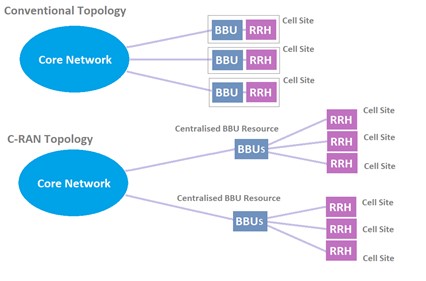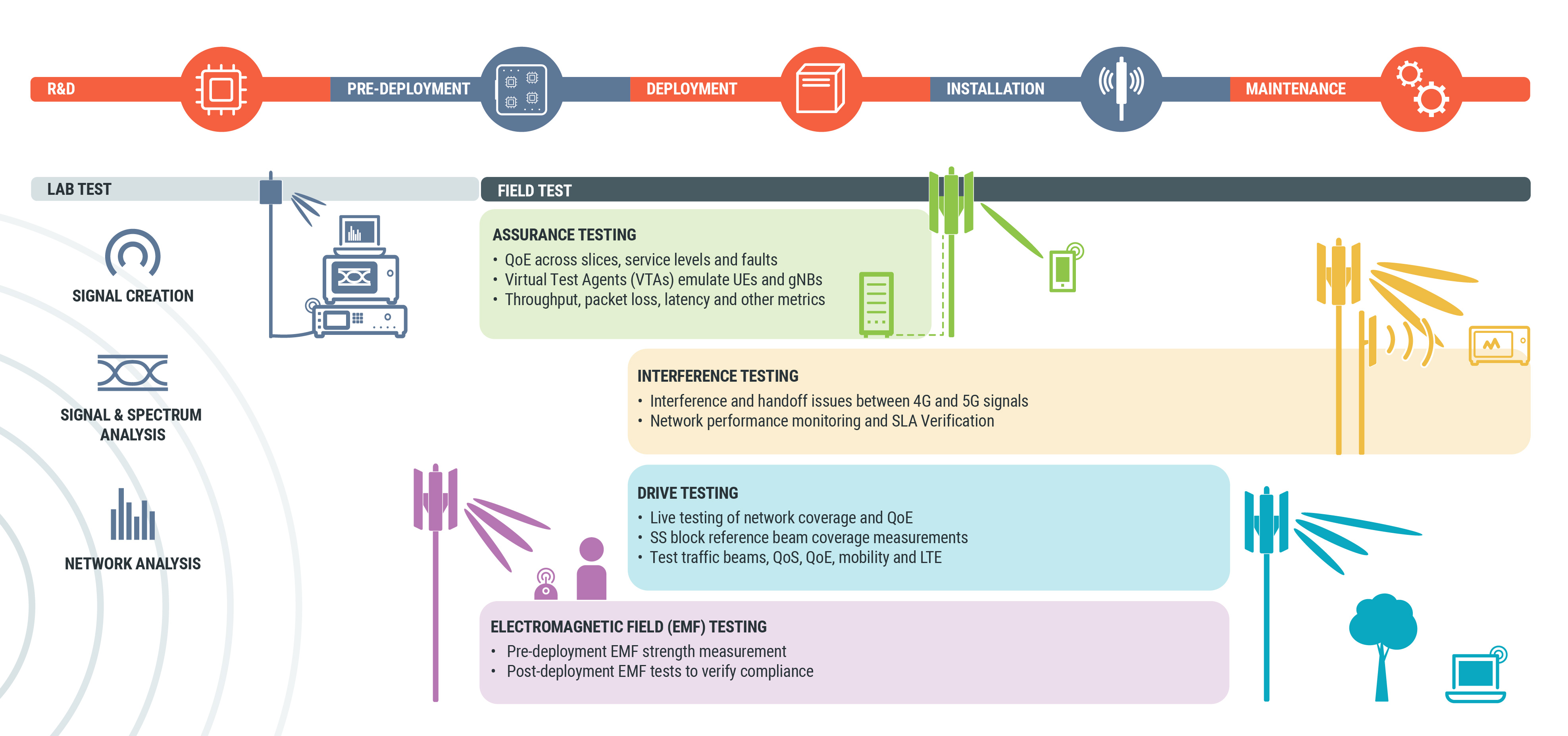Redefining fronthaul test strategies
As we step into the 5G era, the demands placed upon mobile network infrastructure will intensify. An almost hundred-fold increase in the data rates will need to be supported. Likewise, the number of connections that each cell has to deal with will ramp up dramatically. There will, in time, also be a need to accommodate ultra-low latency operation. All this means the nature of the fronthaul topology employed is going to alter considerably. Peter Spillman, Global Vice President of Product Strategy at Electro Rent explains more.
Here we will look at the implications from a test perspective. We will outline the changes to the way in which engineering professionals approach fronthaul performance testing activities, as the industry moves from legacy interface technologies to more modern ones. We will also give details of the equipment needed to conduct such tests and the numerous ways via which these items can be sourced.
In previous generations of mobile communication, fibre-based Common Public Radio Interface (CPRI) technology connected the BaseBand Unit (BBU) with the Remote Radio Head (RRH) in each individual base station. Now we are starting to see an increasing prevalence of an alternative strategy, which is inherently more flexible and scalable.
With the advent of the Centralised Radio Access Network (C-RAN) topology, it is possible to streamline mobile networks, shedding some of the excessive complexity present in the past.
C-RAN Basics
Rather than each individual mobile cell site having its own separate BBU, with C-RAN a centralised BBU resource simultaneously serves several neighbouring cell sites. There are clear advantages in doing this - as hardware and maintenance costs, as well as power consumption and thermal management, can all be markedly reduced. Figure 1 illustrates the difference between C-RAN and an older conventional topology.

Figure 1: Comparison of conventional and C-RAN radio access topologies
The C-RAN arrangement is helping to significantly simplify mobile networks and allow a greater pooling of available network assets. Though it was already deployed within a small proportion of 4G base station implementation, its prevalence is going to increase greatly as 5G roll-out begins to gain traction.
C-RAN aligns well with the impetus to reduce all the costs associated with both the deployment and the day-to-day running of a mobile network. It will also help with the transition to ever-higher degrees of network virtualisation.
Migration from Optical to Ethernet-Based Connectivity
The replacement of CPRI with Ethernet-based connectivity offers numerous benefits to next-generation mobile infrastructure. Firstly, it is inherently less expensive. Secondly, it supports transportation over much longer distances, something which is important if C-RAN is to see widespread adoption (since the towers served by one centralised BBU could easily be 15-25 miles from each other).
Finally, it delivers deterministic operation, and that is vital as ultra-low latency 5G services start to emerge in the years ahead. However, in what ways will this alter how test procedures are carried out?
Test Considerations
The move from fronthaul architectures that are Ethernet-based rather than CPRI-based fronthaul is going to have a major impact. It will lead to modifications in the type of test parameters that need to be investigated, and also the level of accuracy at which data must be acquired.
Multipath propagation will be the foundation of 5G technology, enabling coverage levels to be enhanced. All these signals must, however, be synchronised with one another - adhering to clearly defined end-to-end latency times. Thorough testing will be required to assure this. Given the long distances over which C-RAN Ethernet cabling will have to run, there is a greater chance of packet loss occurring. In addition, increasing network densities and overcrowding of the available RF spectrum will mean that there are more potential sources of interference to deal with (from both an internal and an external standpoint).
Based on these dynamics, here are some of the key test parameters that must be given attention:
- Synchronisation
- Latency
- Spectrum Analysis
- Noise Measurement
The Potential of O-RAN
Looking ahead, the emergence of Open Radio Access Network (O-RAN) technology will have far-reaching benefits to mobile operators. It will mean that they are no longer tied into using pricey custom-made network hardware from a small number of suppliers but can pick much cheaper generic off-the-shelf component parts from an array of different vendors, then integrate these together.
This will move things further forward with the long-term goal of having highly efficient virtualised networks that are more agile and versatile, with the ability to be configured to address all manner of workload requirements. It will admittedly bring, once again, major test challenges though.
Firstly, there is the matter of assuring interoperability between each of the specified items of hardware. Then these items must also be interoperable with 4G hardware that is already in place too. More sophisticated end-to-end test solutions will therefore be needed.
Logistical Challenges
In order to meet the new fronthaul testing demands that the roll out of 5G infrastructure requires, engineers need to be able to get hold of advanced equipment that can deal with the time-sensitive networking functions previously discussed so that ultra-low latency services can be brought into action. The accelerated roll-out schedules that 5G technology will bring with it mean that test equipment assets must be efficiently managed. This has to be done in a way that ensures field operative as certain of rapid access to what they need, as any delays will clearly result in loss of revenue for the mobile operator.
With tight deadlines to meet and a multitude of different aspects needing to be attended to, engineers will require first-class support with their fronthaul deployment work. Not only must they have immediate availability of essential items of equipment, but this should also be offered via an array of flexible commercial packages - so that the one that most closely matches the timeframe and budgetary criteria of the particular project can be chosen.
Conclusion
As we move into the 5G era, flexible fronthaul configurations are going to be required. By employing these, and fully committing to them, it will be possible to attend to the acute latency and throughput expectations that mobile networks are destined to have placed upon them in the near future, and simultaneously bring much-needed savings in terms of CAPEX and OPEX. In order to achieve this, a detailed and in-depth understanding of the new test landscape is essential.
As a trusted sourcing partner to the mobile communications sector, working with many of its foremost players, Electro Rent is well positioned to address the upheaval currently taking place at the fronthaul. Our experienced staff can guide test engineers on which are the most appropriate test solutions from our extensive inventory for their specific scenario.
Models from the market leaders in test and measurement are available from stock - including Viavi, Anritsu, Exfo and Keysight. A sourcing package that meets project timescales and budgets can then be proposed. Short-term rental, long-term leasing, pay-as-you-rent and certified pre-owned options can all be considered.



